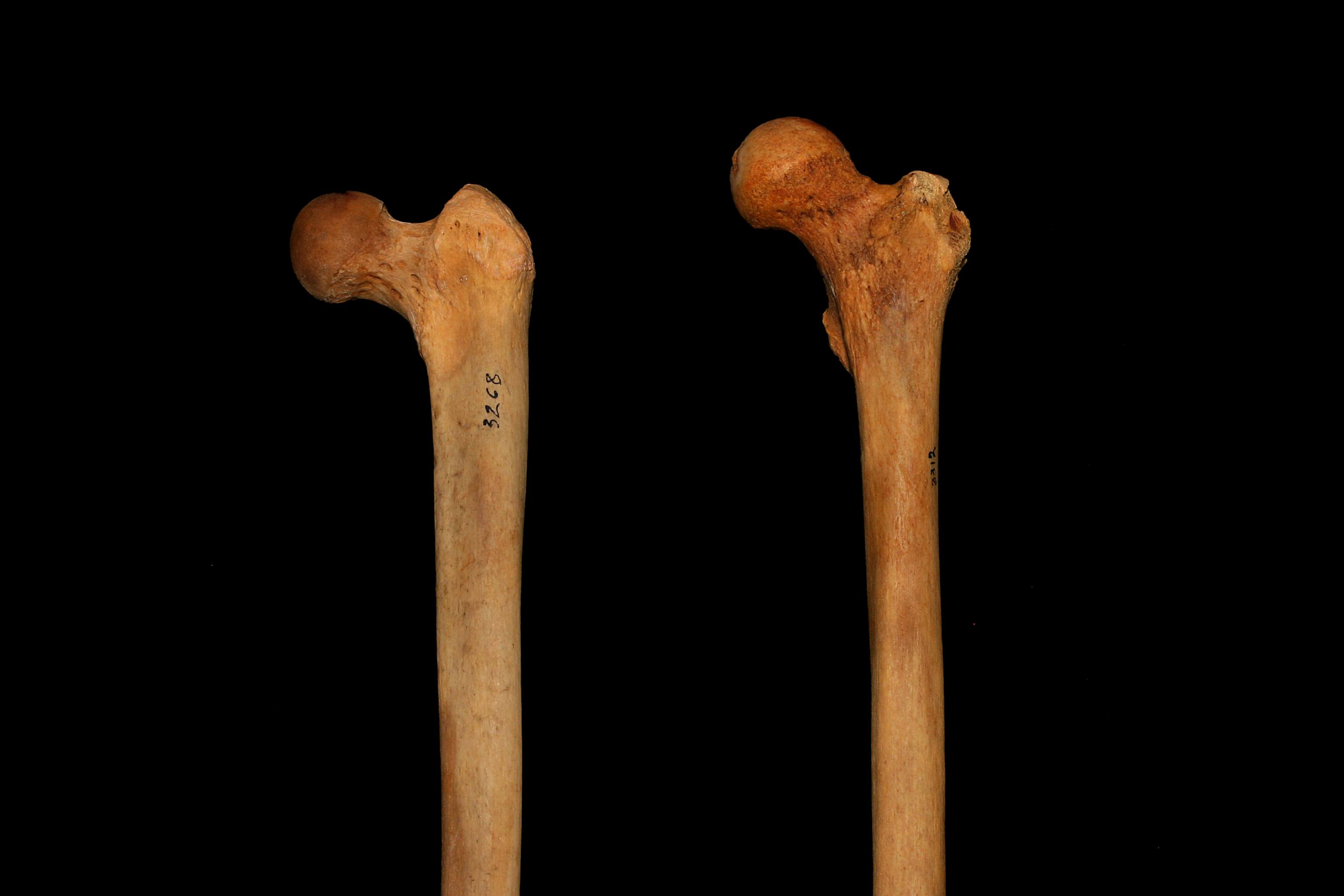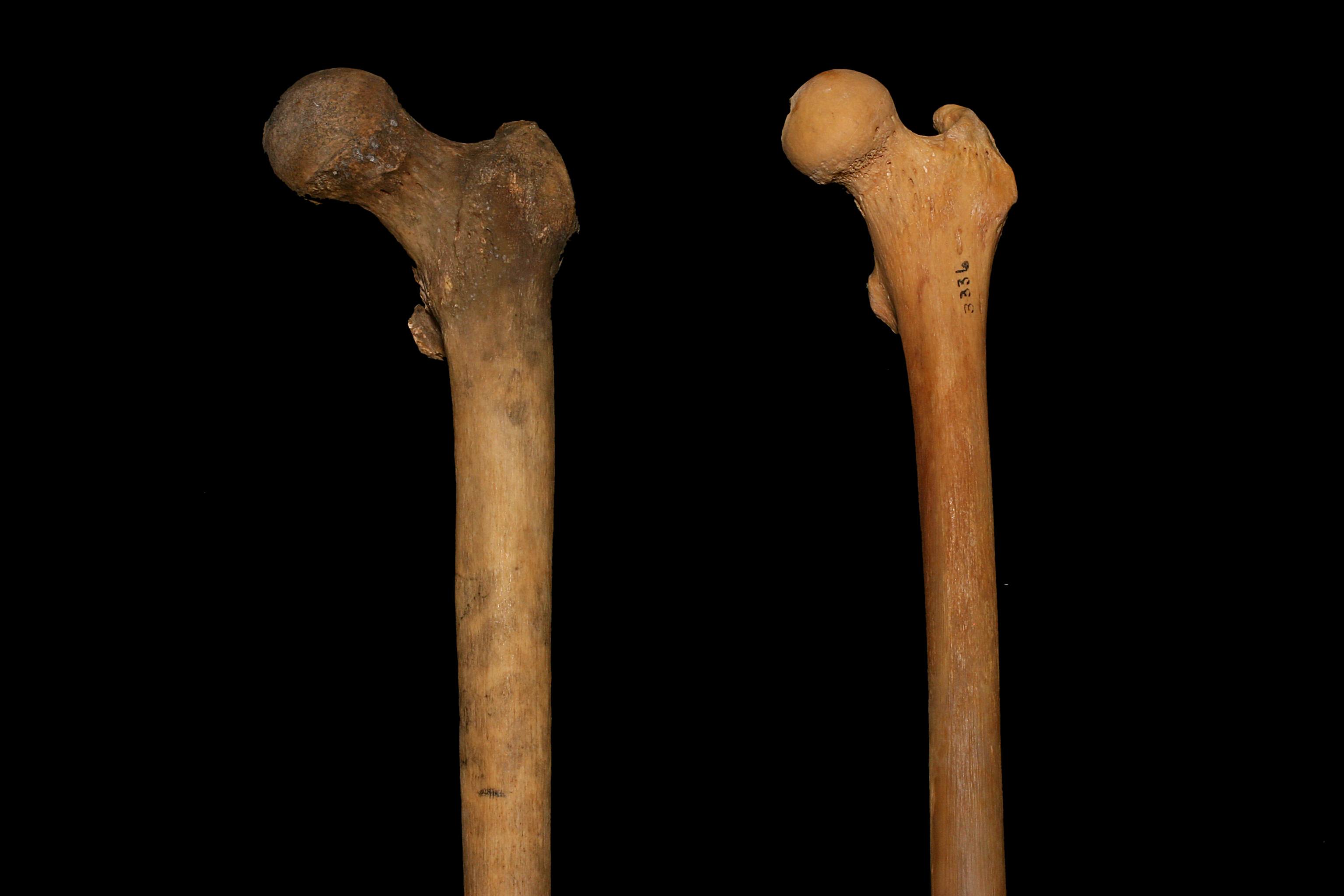The following is a guest post from Ryan DeBell (Instagram) about the best way to squat. It originally appeared on his site, the Movement Fix, and is republished here with permission.
This article will show you why athlete comfort should dictate squat stance width; why some people's (not everyone's) feet point out no matter how much "mobility" work they do.
Why do some people have a really hard time squatting deep?
Why are some people are amazing at pistols while others can't do them at all?
In essence, after reading this article, you will know the answer to the question: why do people have to squat differently? You'll understand there is no one best way to squat ... because the best way to squat depends on your individual anatomy.
Basic anatomy
The hip joint is basically made up of a "socket" on the pelvis, called the acetabulum, and a "ball" at the top of your thigh bone (femur), which we call the femoral head. Around the hip joint are a lot of muscles, a joint capsule, and connective tissue. There are many other anatomical considerations when looking at the squat, but let's focus on the hip.
Anatomical variations
When someone has difficulty squatting, their feet turned out, or a wide stance, we all want to jump on the bandwagon and say "your hips are tight, you need to mobilize them." If we say that without considering anatomical variations of the hip joint, we can be misled.
Let's take a look at this first picture. Here we have two femurs from two different people. One points more upward, the other points more downward. Do you think these people will squat the same when they have that much difference in bone structure? It's the perfect example of why there is no single best way to squat.

Two different femurs. One points left, the other up. You think that these two people should squat the same?
If you aren't convinced yet, take picture 2. Clearly, one of the "balls" in the ball-and-socket joint is extended more off the femur than the other. This will absolutely change the mechanics of squatting between these two people. No amount of soft tissue treatment will change that. The fact is, these two people will each have their own "best way to squat."

The "ball" of the ball and socket joint on the left is clearly longer than the one on the right.
Now look at picture number 3 below. Look at how differently the angle of where the ball is pointing between these two femurs. Guess what? One of these people will have a bony block when they try to squat in a narrow stance, while the other can squat with a narrow stance like a champ.
Alternatively, one will squat wide and the other will have pain when squatting wide. But doesn't the difference in the shape of the "ball" make that seem obvious? Maybe your piriformis isn't the limitation after all.

One of these people will never be able to squat narrow while the other will be able to do it with no issues, can you guess which is which?
Things get even more interesting when you start looking at the socket. Take a look at picture number 4. On the left, you can see into the socket. This person will likely be able to squat with a narrow stance versus the person on the right, who will literally run into themselves when squatting with a narrow stance.

Same size pelvis, huge difference in the space in the joint.
Now look at picture 5. Again, we see the difference in how much of the hip socket we can see. There is no way these two people will squat the same. The bony anatomy literally won't let them. If these two people physically can't squat the same, then how could we ever say there is one best way to squat?

It's not a "tightness" or soft tissue issue. There's literally bone in the way. Nothing you can do other than change your form.
Picture 6 is a view looking at the hip socket from the side. One is pointing straight out, while the other is pointing down and toward the front. My guess is one of these people will be better at pistols; one will be worse.

One hip's pointing straight out, the other to the side.
So how do you figure out the best way to squat for you?
READ ALSO: Find Your Optimal Squat Stance
Overall, no two athletes will squat the same, and they shouldn't! What I discussed above hopefully shed some light on the why. Basically, an athlete's comfort will dictate their squat stance which puts their hip in a better bony position. There are narrow squatters and there are wide squatters. That may have nothing to do with tight muscles or "tight" joint capsules, but have more to do with bony hip anatomy.
Very few people are at the end range of their hip motion, so hip mobility drills are definitely a good idea.
People will express their hip mobility in different planes, and that is not a bad thing.
(All photos were used with permission from Paul Grilley's bone photo gallery. )










